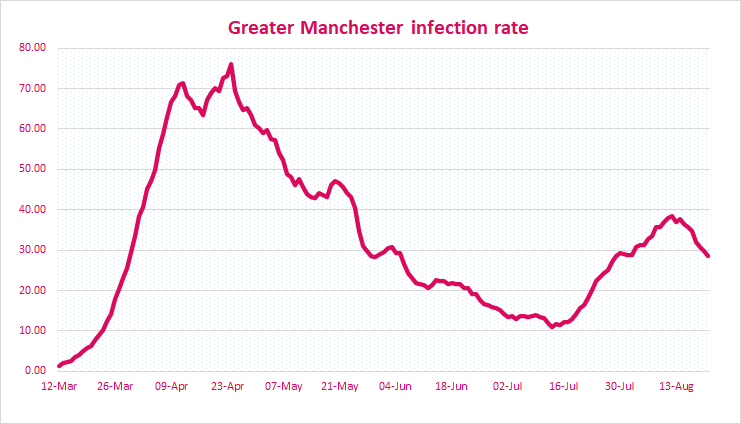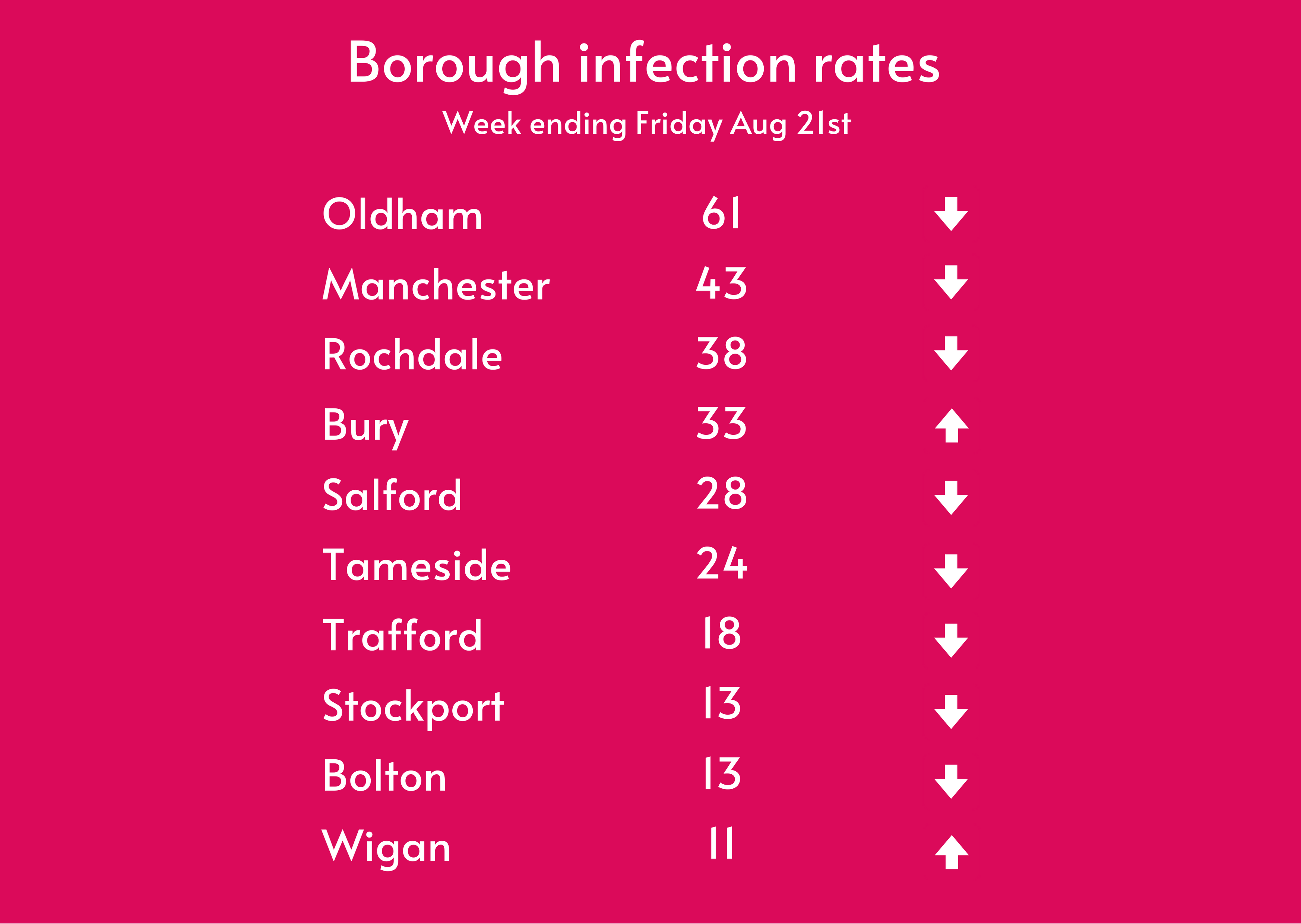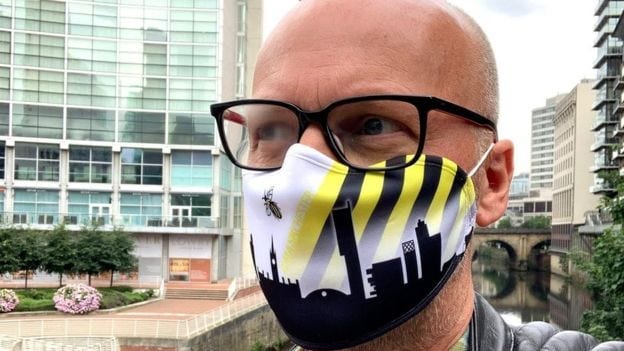Good morning Millers - thanks to the hundreds of you who filled out the survey I sent on Sunday. It’s been really interesting (and uplifting) to read your feedback and thoughts in the last few days. I really want The Mill to be a media company that is connected to its readers and regular reader surveys will be an important part of that. I’m going to leave the survey open for a few more days for anyone who hasn’t had a chance to look at it yet - you can fill it out here.
As for today: I’ve got an update on the latest Covid-19 numbers in Greater Manchester. If you think someone you know might find this post useful, please do forward on the newsletter or use the button below to share it.
Just over two weeks ago, The Mill reported that Greater Manchester’s Covid-19 outbreak looked like it had stalled. Now we can confidently say that it has gone into reverse. The latest data from Public Health England shows that for the week ending last Friday (August 21st), infection rates fell compared to the week before in every borough except Bury and Wigan, and the increases there were tiny. In Greater Manchester overall, the infection rate fell by about a quarter to 28.6 (the infection rate is the rate of positive tests over a week per 100,000 inhabitants).
That’s the lowest rate since we’ve seen since the last week of July, which was when the extra lockdown restrictions were announced. It means the infection rate spike we have seen in Greater Manchester in the past month is over - it went up, and it’s come down again. That doesn’t mean it won’t start to rise again for whatever reason - but this latest upward trend we’ve been watching has reversed itself. You can see that on the right hand side of this graph, which shows the infection since the start of the pandemic.

Oldham still has the highest rate (61), but has come down dramatically - it is half of what it was in the week ending August 11th. And we know from the council’s website that this infection rate decrease took place while the borough was further increasing the number of tests being done. Manchester’s rate is the next highest at 43, and though it has fallen about a tenth in the past week, it is holding steadier than most of its neighbours. Rochdale and Bury are in the 30s, Salford and Tameside are in the 20s, and Bolton Stockport, Trafford and Wigan are under 20, and therefore are of very little concern (there’s a full list of borough infection rates in the graphic below).
As we always say when reporting these numbers, infection rates are a very rough indicator of what is really going on, because they are so contingent on the amount of testing being done in an area, and how focused that testing is. And because the councils have generally been very poor at releasing information about the number of tests they are doing and the percentage of those tests that are coming out positive, we can only draw pretty tentative conclusions about the state of the local outbreak.
That’s why I’ve chosen not to offer day-by-day graphs and commentary on how the numbers are moving in every borough - the data just doesn’t stand up to that level of analysis. It’s the very broad trends and movements that might be useful, and now we can see that the movement is downwards, in almost every borough and in Greater Manchester overall.

The big question now is when the extra lockdown restrictions we are living under will be lifted (as they have been in Wigan today). Health officials will need to work out whether they think it was the new restrictions in Greater Manchester that slowed the outbreaks here, or some other factor. Frankly that’s a question we don’t have enough public data to answer. It looks like the turning point - when infection rates in most boroughs started falling - was about ten days ago, so in the week ending August 17th.
NHS data doesn’t show any significiant uplift in local hospital admissions, hospital deaths or even coronavirus symptoms triaged through the 111 or 999 phone lines in the past few weeks. This would make sense for an outbreak that was always thought to be led by younger people, but it makes it difficult to justify continuing to ban people from visiting each other’s homes.
This morning, the government announced that in areas of the country living under extra restrictions, secondary school students and teachers will have to wear face coverings in communal areas (not in classrooms). That means children in Greater Manchester who go back to school next week will do so wearing masks - a big new imposition resulting from the area being under extra lockdown rules. We will have to see how that goes down among parents, but it certainly raises the stakes on the decision about when to release Greater Manchester from its current restrictions.

The artist Justin Eagleton in one of his Manchester-themed masks
Andy Burnham is giving a press conference this afternoon. If you have any questions you would like The Mill to ask, please post them in the comments or reply to this newsletter and I’ll pick one or two to put to Burnham and his deputy mayors.

Comments
How to comment:
If you are already a member,
click here to sign in
and leave a comment.
If you aren't a member,
sign up here
to be able to leave a comment.
To add your photo, click here to create a profile on Gravatar.






